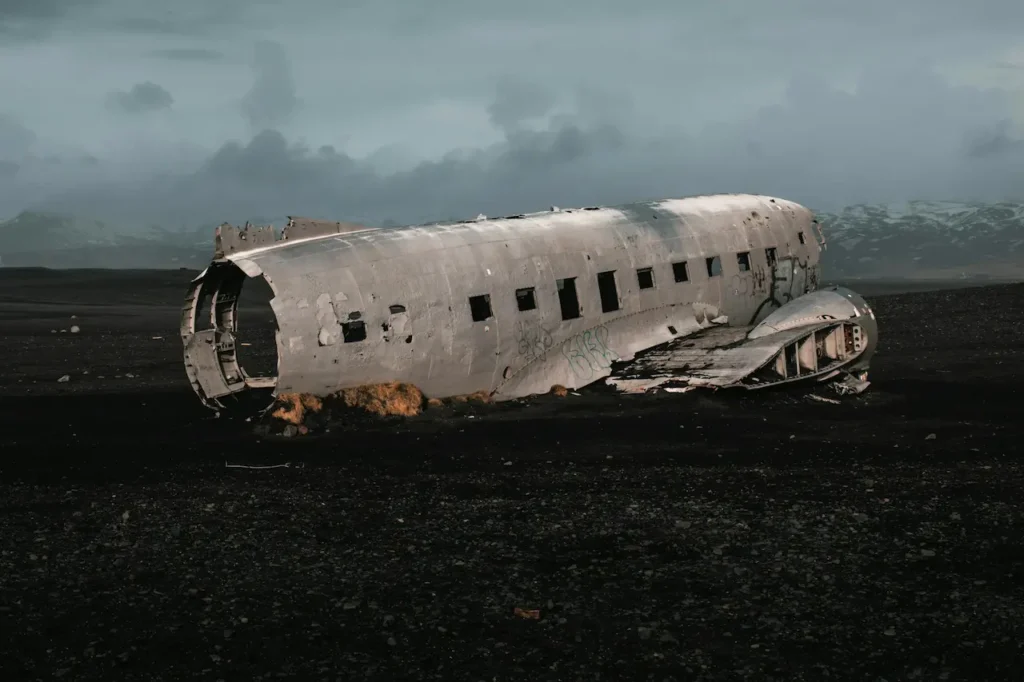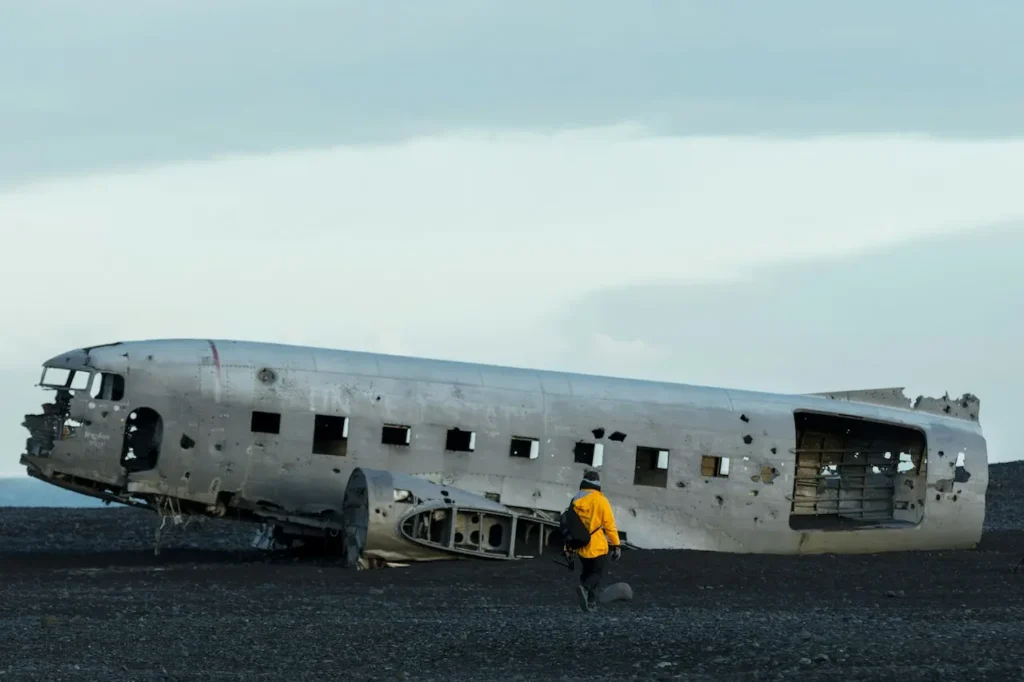The Air Crash of Dubrovnik, Croatia
On April 3, 1996 tragedy struck the hillsides around Dubrovnik in Croatia when a United States Air Force Boeing T-43A operating under Flight IFO-21 crashed as it attempted to land at Dubrovnik Airport. The Boeing 737-200 aircraft was a military version of that model and it carried Ron Brown, the U.S. Secretary for Commerce, and a group of 34 American officials and businessmen on a mission of strengthening economic ties with the war-torn Balkans. The plane crashed into rugged terrain when it was making a non-precision landing in bad weather. All 35 passengers and crew members died.
The Air Crash of Dubrovnik accident was not only one of the worst air disasters to involve a U.S. official, but it also revealed critical flaws in navigation, pilot training, and equipment limitations. The crash of Flight IFO-21, nearly three decades after it occurred, remains a poignant reminder of the dangers associated with flying in difficult environments and of the cost of human errors in aviation.

The Final Flight of IFO-21
The United States Air Force Boeing T-43A, a military variant of a Boeing 737-200, was tragically destroyed when it collided into a hillside while attempting to land at Dubrovnik Airport in Croatia. All 35 passengers were killed including U.S. Commerce Secretary Ron Brown and an American delegation on a business mission to the Balkans.
The mission was to transport Secretary Brown and his delegation from Zagreb, to Tuzla, and Dubrovnik. They then returned to Zagreb. The aircraft, operating under the callsign IFO21 departed Zagreb in the morning at 06:24. It arrived in Tuzla at 07:15 without incident. The aircraft was forced to reposition to Split after the passengers had disembarked to attend meetings.
The delegation then reboarded the T-43A at Tuzla. The accident flight left for Dubrovnik around 13:55. Air traffic control cleared the descent from FL210 to FL140 and then to FL100 after passing Split at 14 :34. IFO21 had reached FL100 by 14:45 south of Split VOR, and Zagreb Center handed it over to Dubrovnik Approach.
The Dubrovnik controller cleared IFO21 directly to the Kolocep NDB (KLP). The crew was told to descend to 5 000 feet once the conflicting traffic had been cleared. At 14:52 the crew reported that they were 16 nautical miles away from the airport. They were cleared to descend to 4,000 feet and instructed to report the crossing of the KLP beacon.
At 14:53 the aircraft was not configured to land as per requirement and crossed KLP (the Final Approach Fix) at 4,100 feet. The approach clearance from Dubrovnik Tower was not yet received.
The tower cleared IFO21 to use the NDB for runway 12 at 14:54. After crossing KLP the aircraft took a different course than the published 119 degree, which put it slightly off its intended approach path. The aircraft descended close to the MDA of 2,150 feet.
IFO21 was struck by a mountainside at 14:57. It was located 1.8 nautical mile from the end of the runway 12 approach and 1.7 nautical mile northeast of the extended centerline of the runway. The aircraft was destroyed and all the people on board were killed. This is one of the worst air disasters to ever occur in U.S. history.

Findings of the Air Force Investigation
The U.S. Air Force accident board report identifies multiple factors which contributed to the crash. This aircraft was operating under IFO-21, the shorthand for “Implementation Force”. The report identified failures of command oversight and an aircrew mistake as the most important findings. an improperly designed instrument approaches procedure was also a key finding. The board found that, despite the poor weather conditions of the day, the weather did not play a major role in the accident.
The Boeing CT-43A Bobcat that was involved in the crash originally served as a trainer before it was converted to transport distinguished visitors. The aircraft was performing an IFR (Instrument Flight Rules), non-directional beacon approach (NDB), a nonprecision type instrument approach, on April 3, 1996. Precision approaches have vertical guidance. Non-precision approaches do not.
NDB approaches, at the time, were mostly obsolete in U.S. Aviation, but they continued to be used in other parts, such as Eastern Europe. NASA’s survey found that 60 percent of U.S. transport rated pilots hadn’t flown a NDB approach during the year prior. This raised concerns regarding proficiency. This lack of experience probably played a part in the accident.
Investigations on Air Crash
Investigation revealed that the approach was not authorized for Department of Defense aircraft, and shouldn’t have been attempted. The NDB approach in question required two operational Automatic Direction Finders, instruments essential for tracking required navigation points. The CT-43A, however, only had one ADF. The first ADF was required to track the outbound route of 119deg, from the Kolocep NDB. (KLP), and the second ADF was necessary to identify a missed approach point at Cavtat NDB.
The report also highlighted several procedural flaws during the flight. The crew was rushing the approach and descending at approximately (150 km/hr) faster than recommended final approach speed. The aircraft entered the final approach phase before receiving the proper landing clearance from Dubrovnik Tower.
The combined errors of inadequate planning, lack of navigation equipment and procedural oversights ultimately led to a controlled flight into the terrain (CFIT), which claimed the lives 35 people on board.

A Legacy of Partnership and Remembrance
Trey Lyons (U.S. Ambassador’s Charge d’Affaires a.i.) reflected on what the mission was all about. He emphasized that the delegation came to strengthen U.S. – Croatia relations, which, despite tragedy, is still a goal to this day.
Dubrovnik Mayor Mato Francovic reiterated this sentiment and recalled how Secretary Ron Brown’s team sought to support Croatian post-war reconstruction through encouraging American business to invest in the area.
“Sadly, the tragedy has stopped that initiative. But strong U.S. Support for Croatia endured and we are seeing today’s results. “The United States respects Croatia, and recognizes its role as a stabilizing factor in the region,” said Frankovic during a commemoration ceremony.
At the event, representatives of the Croatian Ministry of Defence, Dubrovnik County, Konavle Municipality, and Dubrovnik Airport also attended, underscoring this shared history.
In a stormy April 1996, the U.S. Air Force plane carrying Secretary Brown, and 34 other passengers, crashed near Cilipi, as it approached Dubrovnik. The aircraft crashed on Sveti Ivan Hill near Cilipi, as it approached Dubrovnik. All the passengers died including two Croatians – a photojournalist & an interpreter. It was one of the worst air disasters to ever occur in the history of the region.
The crash, which claimed many lives and ended a promising diplomatic initiative, also left a legacy that emphasized cooperation. Nearly 30 years later, the partnership that Brown and his delegaion envisioned still exists, and is a testament of resilience and shared commitment among nations.
Conclusion
Flight IFO-21 crashed on April 3, 1996. It is one of the most tragic chapters in American aviation history. 35 people were killed, including Secretary Ron Brown, and other key figures from the American business community. The mission to bring hope and economic reconstruction to the war-torn Balkans was tragically ended on the slopes Sveti Ivan hill.
The investigation revealed a disturbing combination of navigational difficulties, inadequate procedures and human error, reminding the world about the unforgiving nature aviation has when precision is compromised. Despite the loss of the plane, the mission’s goals did not disappear. Brown’s team planted the seeds for partnership and reconstruction, which grew and shaped strong U.S. – Croatia relations to this day.
The story of IFO-21 is a poignant reminder that those who strive for peace and progress are at risk. Lessons learned from this tragedy continue to impact aviation safety worldwide.




